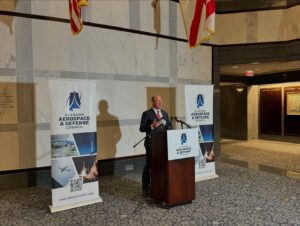Martha Roby narrowly wins re-election to fourth Congressional term

Alabama’s 2nd Congressional District re-elected Martha Roby to the U.S. House of Representatives Tuesday. The Montgomery Republican narrowly defeated Democratic challenger Nathan Mathis 46-43 percent. Roby faced a tougher than initially anticipated Election Day following backlash from her October withdrawl of support from Republican Presidential nominee Donald Trump in light of the derogatory comments he made about women over a decade ago. She will return to the House for a fourth term, where she has vowed to keep fighting on the issues that matter to the 2nd District. “I’m grateful for the opportunity to continue serving in Congress and carry on our work on some important priorities,” Roby said following her victory. “Over the last six years, I have fought hard on behalf of this district. I’ve fought on behalf of veterans to expose corruption at the VA and improve care. I’ve fought on behalf of farmers to deliver more sustainable agriculture policy. I’ve even fought my own party leadership when it came to cuts that threatened Maxwell Air Force Base and Fort Rucker. “There’s a lot more fight where that came from, and I’m eager to get back to work.” Though the results of the Presidential election are not yet known, Roby vowed to keep her focus on the issues that matter to Alabamians. Roby continued, “Right now, we don’t know whether conservatives will be playing offense or defense with the White House. No matter who ultimately wins the presidency, my focus will remain working hard to advance conservative values and solve problems on behalf of the people I represent. “One takeaway from this election I want to press with Republican leadership is how so many working people feel marginalized in a country where the outcomes seem predetermined and the deck is stacked against them. Whether it is trade or immigration or tax policy, we need to be communicating how our plans on the issues work to benefit the American worker. We talk a lot about how conservative policies will help the person that owns the factory, but we need to spend more time explaining how they help the men and women working inside it. “I’m eager to carry that message back to Washington.”
Incumbent Gary Palmer defeats challenger David Putman in Alabama’s 6th District
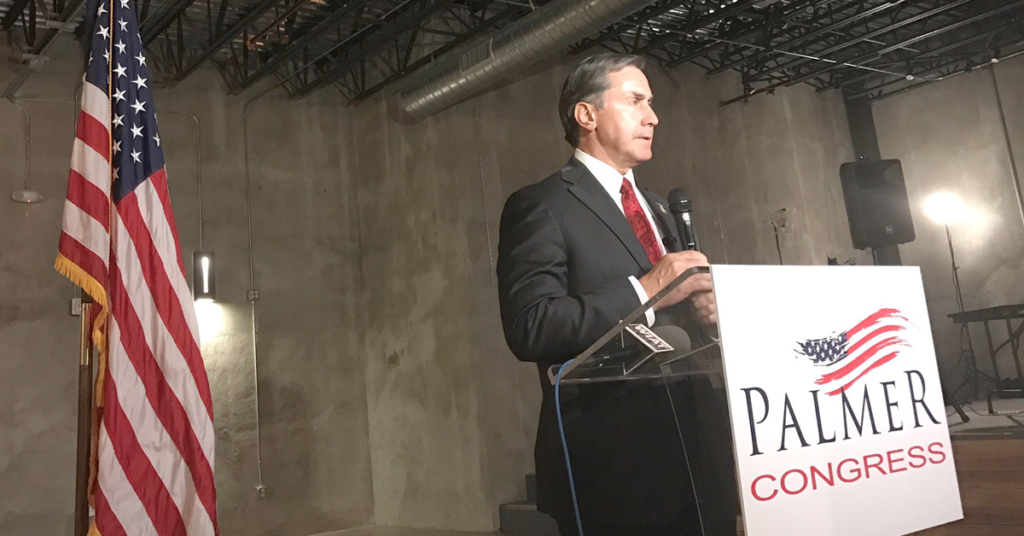
Republican U.S. Rep. Gary Palmer has defeated Democrat David Putman in Alabama’s 6th District. Palmer had 57,642 votes as of 9:30 p.m. CT compared to his opponents’ 17,334. Palmer will continue to represent Jefferson County outside of Birmingham, and the entirety of Bibb, Blount, Chilton, Colbert, Coosa, and Shelby counties in a second term in the U.S. House of Representatives.
Richard Shelby wins re-election, 6th term in US Senate

Alabama U.S. Sen. Richard Shelby won re-election to the U.S. Senate on Tuesday night, besting Democratic challenger Ron Crumpton in what turned out to be a decisive victory for the incumbent Republican. Crumpton, a Democrat from Shelby County with a history of political activism, is best known in the Yellowhammer State as an advocate for legalizing medicinal marijuana. “I want to thank the people of Alabama for once again placing their trust in me to serve as their U.S. senator,” said Shelby following the results. “This responsibility is one that I do not take lightly and I am honored by the support I received tonight. “As we work together to advance conservative principles, my focus will be on policies that prioritize Alabamians and all Americans — not Washington. I am grateful for the opportunity to continue to stand up on behalf of our great state and work towards a prosperous future for our children and grandchildren.” Shelby, 82, will begin his sixth term in U.S. Senate in January 2017.
Donald Trump wins big in Alabama
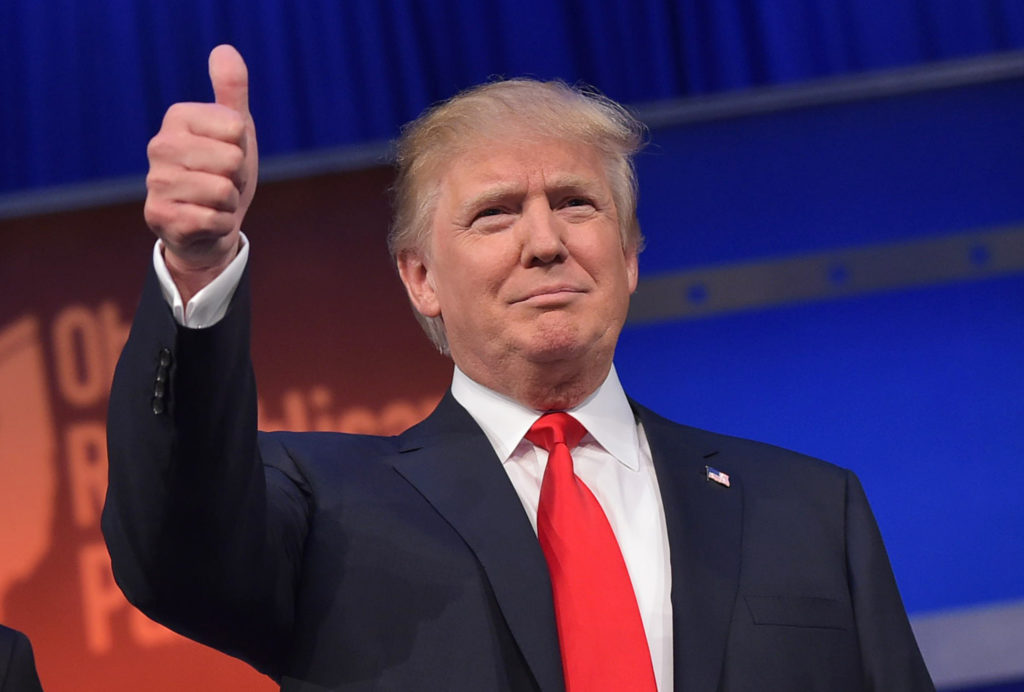
Shocking absolutely no one, Republican Donald Trump took home a decisive victory in the Yellowhammer State on Tuesday night over Democrat Hillary Clinton. Trump was heavily favored to win the state, which hasn’t been won by a Democrat since President Jimmy Carter in 1976. Trump was called the victor with 63 percent of the vote, compared to 36 percent for Clinton. Trump therefore takes all nine of Alabama’s Electoral College votes.
Hillary Clinton casts her ballot: ‘It is the most humbling feeling’
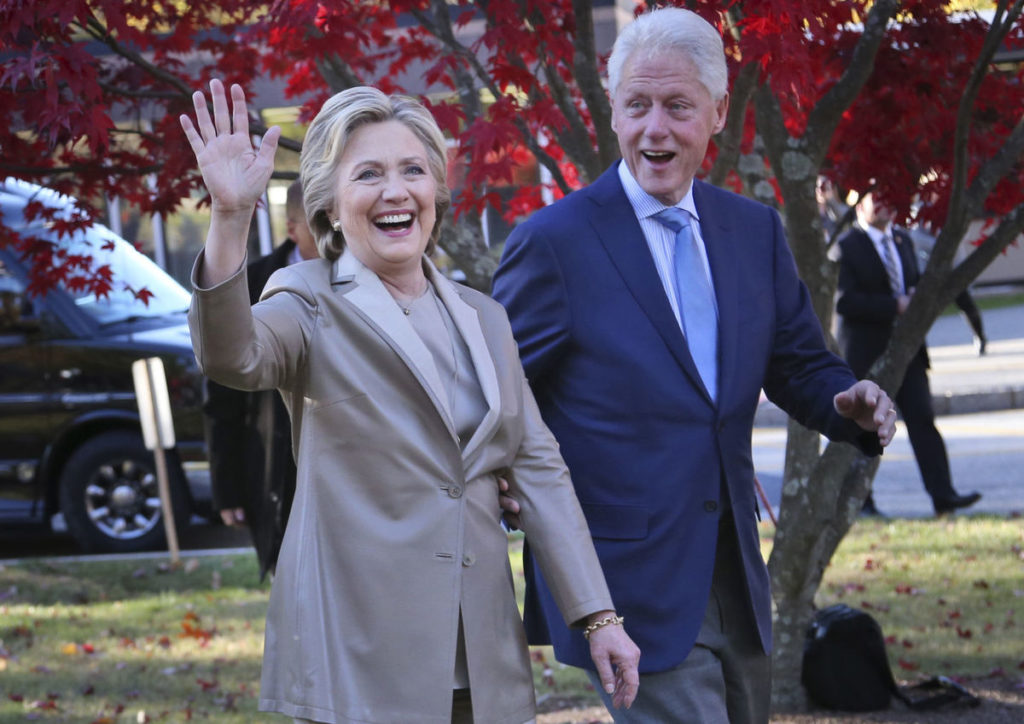
She’s delivered her closing pitch, concluded her final rally and cast her own vote. By Tuesday evening, there was little left for Hillary Clinton to do but wait, and prepare for word of whether she’d be picked as the first woman to serve as U.S. president. Her campaign picked a suitably symbolic location for her election night party – the Jacob K. Javits Convention Center in New York City, which, in a nod to the historic moment, offers a glass ceiling. As returns started trickling in Tuesday night, the Democratic nominee watched the information with a collection of close aides at the Peninsula New York, a luxury hotel nearby. The first round of poll closings came at 7 p.m. with Clinton taking Vermont and Trump winning Kentucky and Indiana. Those early wins were expected for both. Casting her ballot at an elementary school near her home in suburban New York on Tuesday morning, Clinton acknowledged the weight of the day, saying: ” so many people are counting on the outcome of this election.” It was a relatively calm Election Day compared with Clinton’s hectic final few days day on the campaign trail. The former secretary of state and New York senator dashed through battleground states, encouraged get-out-the-vote efforts and campaigned with a star-studded cast of celebrity supporters. The eve of the election included an emotional rally in Philadelphia with her husband, President Barack Obama and first lady Michelle Obama, as well as performances by Jon Bon Jovi and Bruce Springsteen. Lady Gaga capped it off by serenading thousands of supporters before the Clintons took the stage for a 1 a.m. rally in Raleigh, North Carolina. After the divisive rhetoric of the campaign against Republican Donald Trump, Clinton sought to offer a positive closing message on Monday. She told supporters in Pittsburgh they “can vote for a hopeful, inclusive, bighearted America.” In a buoyant mood, she also greeted voters who cried out “we love you,” smiling back: “I love you all, too … absolutely.” Some good news boosted Clinton’s spirits in the final moments of the campaign. On Sunday, FBI Director James Comey sent a letter to Congress, informing lawmakers the bureau had found no evidence in its hurried review of newly discovered emails to warrant criminal charges against Clinton. The late October announcement of a fresh email review rocked the race just as Clinton appeared to be pulling away from Trump in several battleground states. The update from the FBI may have come too late for some: In the nine days between Comey’s initial statement until his “all clear” announcement on Sunday, nearly 24 million people cast early ballots. That’s about 18 percent of the expected total votes for president. But campaign aides projected confidence in the final moments. They said they felt good about Nevada, where they said support for Clinton in early voting was strong. They were encouraged by the strong Latino turnout in Florida and felt they took a strong lead in Michigan and Pennsylvania into Election Day, when the bulk of votes are cast in those states. Leading up to Election Day, Clinton made stops in Pennsylvania, Michigan, North Carolina, Ohio and New Hampshire – often flanked by star guests. Jay Z and Beyonce performed with pant-suited backup dancers in Cleveland. James Taylor serenaded New Hampshire voters and Katy Perry sang “Roar” in Philadelphia. She also campaigned with Khizr Khan, the father of a slain U.S. Army officer whose indictment of Trump at the Democratic National Convention was an emotional high point for Clinton’s party. Her last two days on the campaign trail felt almost like a Clinton family reunion, with some of her closest confidants jumping on the campaign plane for her final hours. Even Huma Abedin, her embattled personal aide caught up in the email controversy, jumped on the plane for the midnight rally in Raleigh. Republished with permission of the Associated Press.
Exit Poll: Americans cast ballots while holding their noses
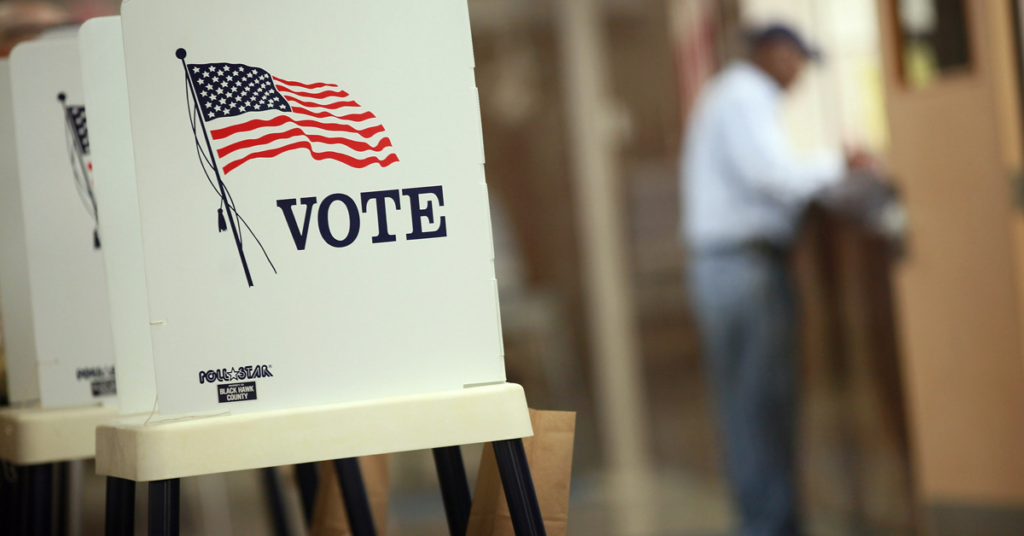
Americans held their noses as they picked a new president on Tuesday: More than half of voters cast their ballots with reservations about their candidate or because they disliked the others running. That was true both for those backing Democrat Hillary Clinton and those supporting Republican Donald Trump, according to preliminary results of exit polls conducted for The Associated Press and television networks by Edison Research. After a long, hard-fought campaign, just 4 out of 10 voters strongly favored their candidate. That’s a shift from 2012, when about two-thirds of voters said they were voting because they strongly favored their candidate. Other findings from the exit poll: WOMEN’S ISSUES VS. EMAIL ISSUES After all of the sound and fury over Trump’s treatment of women, it turned out the issue bothered half of all voters a lot – and women were more concerned about it than men. About 6 in 10 women were bothered a lot, compared to about 4 in 10 men, the exit poll found. The partisan divide on the issue was stark: More than 8 in 10 Clinton voters were bothered a lot by the GOP candidate’s treatment of women, compared to about 1 in 10 Trump voters. It turned out voters were somewhat less concerned about Clinton’s use of a private email server as secretary of state. That issue mattered a lot to about four in 10 voters, including about 9 in 10 Trump voters. Less than 1 in 10 Clinton’s supporters were bothered a lot. Older voters were more inclined to say they were bothered by Clinton’s email issue: About half of voters age 50 and older were bothered a lot, compared with about 4 in 10 younger voters. TO BE HONEST … Neither Trump nor Clinton gets bragging rights when it comes to honesty. About 6 out of 10 voters said they don’t view Clinton as honest and about the same share felt the same way about Trump. Does anyone think both of these candidates are honest? That number was in single digits. Opinions were more mixed on the question of temperament. More than half of Americans said Clinton had the temperament to be president and about a third felt the same about Trump. ABOUT THAT WALL After all the talk during the campaign about immigration, it turned out to be a low priority for most voters: Just 1 in 10 voters said immigration was the most important issue facing the country. As for Trump’s plan to build a “big, beautiful” wall, more than half of voters opposed the idea. Further, 7 in 10 Americans thought immigrants now in the country illegally should be allowed to stay, and just a quarter thought they should be deported. That despite Trump’s tough talk about removing those who are in the country illegally. Immigration was the top issue for about a fifth of Trump voters and less than 1 in 10 Clinton voters. Twenty percent of Hispanics chose immigration as the top issue. Only about 10 percent of other voters picked it as the No. 1 issue. The economy was the top issue for both Trump and Clinton supporters. SOUTHERN SNAPSHOTS In two tightly fought Southern states, vast divides by race, gender and education kept the presidential race close shortly after polls closed. In both Georgia and Virginia, about 9 in 10 black voters and two-thirds of Hispanics backed Clinton, while most whites backed Trump, according to the exit polls. In Georgia, large majorities of whites with and without college degrees backed Trump. In Virginia, those two groups diverged: Whites without a college degree backed Trump by a large margin, while those with a degree split their votes between Trump and Clinton. Women in both states were far more likely than men to back Clinton. Majorities of women in both states said Trump’s treatment of women bothered them a lot. SPLIT VIEWS ON ACCURACY OF VOTE COUNT After all of Trump’s talk about a “rigged” election, most Americans went to the polls with at least a moderate amount of confidence that their votes would be counted accurately. Those who cast ballots for Clinton were far more likely to feel very confident about the accuracy of the vote: About 7 in 10 Clinton voters felt very confident in the count, compared with about 3 in 10 Trump voters. Overall, about half of voters felt very confident in the vote count, and a third were somewhat confident. Less than 2 in 10 said they weren’t very confident or were not at all confident in the vote count. In 2004 and 2008, voters were only slightly more certain about the accuracy of the vote count. About half of voters were very confident in the count, and 4 in 10 were somewhat confident. — The survey was conducted for The Associated Press and television networks by Edison Research with 15,445 voters as they left their polling places at 350 randomly selected sites throughout the United States supplemented by 4,404 telephone interviews with mail, early and absentee voters. The results among all those voting have a margin of sampling error of plus or minus 2 percentage points. Republished with permission of the Associated Press.
Senate control up for grabs as Democrats seek majority
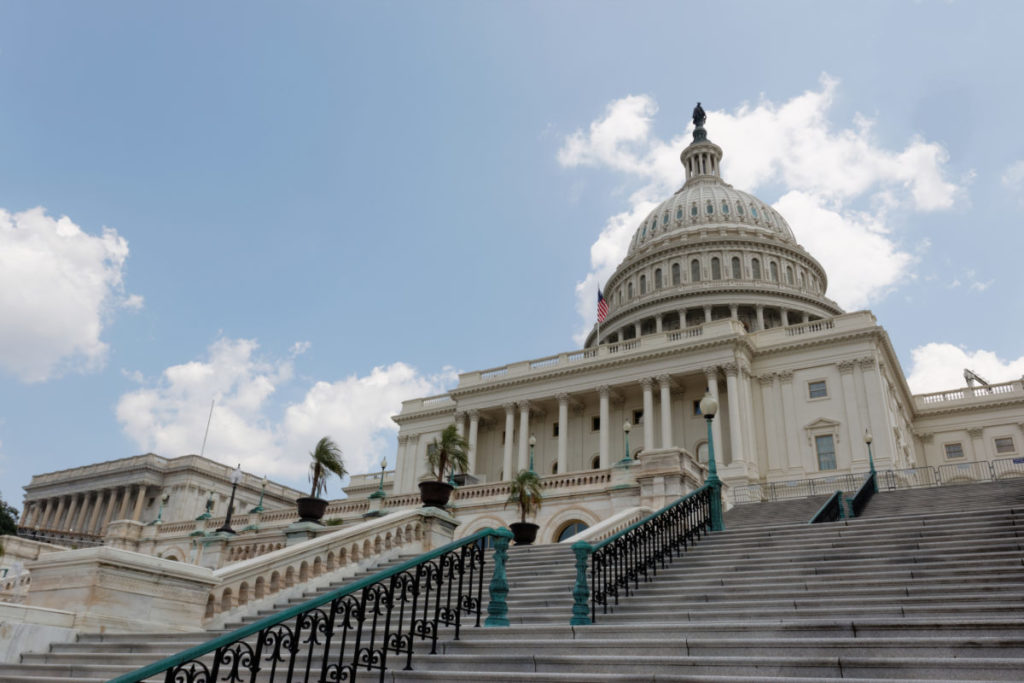
Control of the Senate was up for grabs Tuesday as Republicans’ hopes of protecting their narrow majority in an unpredictable election rested on a handful of states that were toss-ups until the end. GOP incumbents around the country faced energized Democratic challengers trying to oust them in costly and caustic battles shadowed every step of the way by the polarizing presidential race between Republican Donald Trump and Democrat Hillary Clinton. As the first polls closed Tuesday evening, Democratic Sen. Patrick Leahy of Vermont, the longest-serving sitting senator, was re-elected easily to an eighth term. In South Carolina and Kentucky, GOP Sens. Tim Scott and Rand Paul also won re-election as expected. But in GOP-held North Carolina, Missouri and New Hampshire, it looked like it could go either way as voting progressed. The races were also close in Pennsylvania, Indiana and Nevada, the one Democratic-held seat that was hotly contested this election. Republicans hold a 54-46 majority in the Senate, including two independent senators who caucus with the Democrats. That means Democrats need to pick up just four seats to take the majority if Clinton wins the White House and can send her vice president to cast tie-breaking votes in a 50-50 Senate. Democrats would need to pick up five seats if Trump wins. The GOP retook the majority just two years ago. And even though control of the Senate is likely to be razor-thin whichever party ends up on top, the advantages of being in the majority are significant. The controlling party holds the committee chairmanships, sets the legislative agenda and runs investigations. First up is likely to be a nominee to fill the vacancy on the Supreme Court. Democrats were counting on two likely pick-ups in Wisconsin and Illinois, though in Wisconsin polls tightened in recent weeks in favor of GOP Sen. Ron Johnson. Minority Leader Harry Reid of Nevada was retiring after five terms and trying to engineer a Democratic successor. Democrats were optimistic that a strong Latino vote, and Republican hopeful Rep. Joe Heck‘s stumbles with Trump, would keep Nevada in their column. In Florida, GOP Sen. Marco Rubio had a narrow lead in polling going into Election Day over Democratic Rep. Patrick Murphy, who was abandoned by his own party after Democratic bosses decided to pull ad money from expensive Florida and invest it in Missouri, North Carolina and Indiana, instead. But it was a different story in Indiana, where another star recruit, Evan Bayh, former Democratic governor and senator, was struggling in his comeback bid against Republican Rep. Todd Young. Ohio and Arizona, forecast to be competitive early on, were poised to be walks for the GOP incumbents, Rob Portman and John McCain. North Carolina and Missouri, on the other hand, were two GOP-friendly states that turned unexpectedly competitive as incumbent Republican Sens. Richard Burr and Roy Blunt seemed caught unawares by the nation’s restless mood. Throughout the campaign the Senate races provided moments of drama, not least as GOP candidates grappled with sharing a ticket with Trump. That tripped up Sen. Kelly Ayotte in New Hampshire after she asserted at one point that Trump could “absolutely” be a role model for the nation’s youth. Ayotte quickly retracted, then went on to renounce her endorsement of Trump after audio emerged last month of him boasting of getting away with groping women. But damage was done with GOP voters, and it didn’t stop Ayotte’s opponent, Democratic Gov. Maggie Hassan, from trying to tie Ayotte to Trump throughout the campaign. In Nevada, Heck un-endorsed Trump to boos after the groping audio, but later seemed to backtrack. He ended the campaign refusing to say whether or not he’d vote for Trump. Pennsylvania GOP Sen. Pat Toomey, too, kept voters in suspense until the 11th hour before saying he voted for Trump. There were poignant moments, too. McCain, at age 80, was seeking his sixth term in quite possibly his final campaign. The 2008 GOP presidential nominee struck a reflective note in a final pre-election rally in Prescott, Arizona, the same place his Senate predecessor, Barry Goldwater, began his Senate and presidential bids. “While as Yogi Berra said, ‘I hate to make predictions, especially about the future,’ I’m not sure how many more I have in me,” McCain said. “It’s fair to say, then, that tonight is very meaningful to me.” Republicans faced hurdles from the outset, starting with an unfavorable map that had the GOP defending 24 seats, including several in Democratic territory, compared to 10 for the Democrats. Republished with permission of the Associated Press.
GOP battles to limit losses, control House for 2 more years
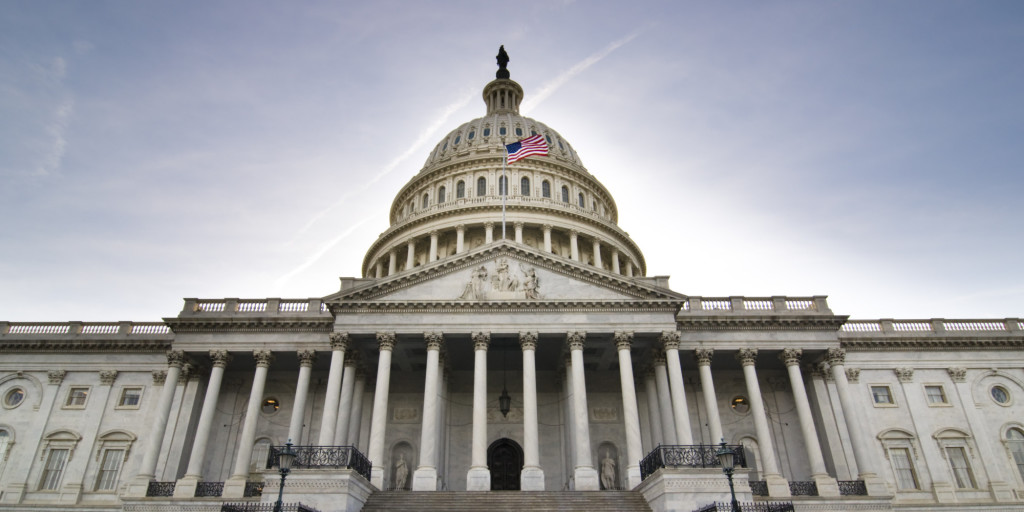
Republicans seemed on track to secure two more years of House control as the first votes in Tuesday’s elections were counted. But the GOP faced an erosion of its historic majority that could leave hard-line conservatives with added clout to vex party leaders. With Donald Trump rousing opposition in many suburban and ethnically diverse districts, Democrats were hoping to gain a dozen seats or more. Chief targets included GOP incumbents in New Jersey, Virginia, Illinois, Florida, Nevada and California. But both sides anticipated that Democrats would fall short of the 30-seat pickup they’d need to take command of the House for the first time in six years. Democrats have gained that many seats in just five of the 35 elections since World War II, including only once – in 2006 – since the 1970s. In the earliest returns, tea party-backed Rep. Thomas Massie was easily re-elected in Kentucky. One prized pelt for Democrats would be eight-term Rep. Darrell Issa, R-Calif., who dogged President Barack Obama with probes into the 2012 killings of four Americans in Benghazi, Libya, and IRS mistreatment of conservative groups. Another would be Rep. Scott Garrett, R-N.J., from New York City’s suburbs, under fire for reports he’d objected to contributing money for gay GOP congressional candidates. Some Republicans are preparing “to do everything they can to stop progress in Washington,” Obama said in one late radio ad. House Speaker Paul Ryan, R-Wis., was touting his “Better Way” agenda on revamping the tax code and welfare programs and dismantling Obama’s health care law for next year. In a final fundraising email, he called it “our responsibility as conservatives” to maintain GOP House control. Trump’s impact on House races seemed spotty and in some districts was counter-balanced by GOP antipathy to Hillary Clinton, Trump’s Democratic rival for president. Republicans were aiming for Democratic-held seats north of Miami and in northern Minnesota and Omaha, Nebraska, and were strongly defending others that once seemed vulnerable in New York, Iowa and Wisconsin. The GOP’s current 247-188 margin, which includes three vacancies, is a high-water mark for House Republicans since the 270 members they had in 1931. Only several dozen of the chamber’s seats were considered competitive. Both parties’ candidates and outside groups spent nearly $1.1 billion combined on House campaigns, shy of the $1.2 billion record in 2012, according to the Center for Responsive Politics, a nonpartisan research group. Republicans had only a slight financial edge. Since Ryan ascended to the top House job last fall, the chamber has approved measures addressing anti-drug programs, customs law enforcement, financial relief for Puerto Rico and the Zika virus. But even with the GOP’s formidable advantage, work has stalled on spending bills after hitting objections from conservatives, including the roughly 40 members of the hard-right Freedom Caucus. With moderate GOP lawmakers likely among Tuesday’s election losers, dissident Republicans’ leverage will likely grow next year. That suggests tougher problems ahead for GOP leaders, with conservative objections likely over a fresh round of budget legislation plus the need to renew the government’s borrowing authority or face an economy-jarring federal default. A thinner Republican majority could also strengthen conservatives demanding the impeachment of a newly elected President Clinton. Ryan has yet to address that issue directly. Even Ryan, who’s said he wants to be speaker in the new Congress, is not immune to ire from the Freedom Caucus and other Republicans upset over his refusal to campaign for Trump. If the GOP margin is whittled significantly, just a handful of disgruntled conservatives could block Ryan from the 218 votes he’d need to retain his post. That could be an embarrassing setback for the GOP’s 2012 vice presidential candidate, who may harbor future White House aspirations, and some Republicans say it might persuade the 46-year-old Ryan to leave Congress. The year began with Democrats rubbing their hands over the prospects that Trump atop the GOP ticket would produce widespread losses for House Republicans. But many Republicans distanced themselves from Trump and stressed their own issues, with some GOP ads explicitly disavowing him. Other spots linked Democratic hopefuls to Clinton or House Minority Leader Nancy Pelosi, D-Calif. Republished with permission of the Associated Press.
In White House math, certain places offer clues on outcome

Did Donald Trump succeed in at last winning over college-educated whites uneasy with the billionaire reality TV star? Did he drive a wave of working-class white voters? Did Hillary Clinton rebuild Barack Obama‘s winning coalition – young voters, urban liberals and minorities – while picking off moderate Republicans? Those questions are central to who will win Tuesday’s presidential election, and a handful of locales could provide some early answers on election night. The Associated Press has identified 10 counties seen as bellwethers for the Trump and Clinton strategies. All come from battleground states in the eastern time zone, where polls close the earliest. Their importance was determined from conversations with Republicans and Democrats, as well as AP’s own analysis. A look at the 10 counties: FLORIDA: In 2012, Obama won by about 74,000 votes (0.9 percentage points): DUVAL This Republican-leaning county, home to Jacksonville, has a solid white majority and sizable black minority, making it look more like the Deep South than south Florida. So a movement in Trump’s favor would mean returns closer to 2004, when George W. Bush won by 60,000 votes, than 2012, when Mitt Romney finished just 16,000 ahead of Obama. HILLSBOROUGH Bush and Obama each won Hillsborough (Tampa) twice, and both are two-term presidents. What makes Hillsborough stand out in 2016 is a growing Mexican-American population. There are already signs that Trump’s hard-line immigration stance is driving up the Hispanic vote: A quarter of the Hispanics who cast ballots in the opening days of early voting hadn’t voted at all in 2012. An expanded electorate (543,000 voted here in 2012) that is less white would benefit Clinton. MIAMI-DADE In Florida’s most populous county, older Cuban-Americans fuel Republicans (333,000 votes in 2012), while younger Cuban-Americans, other Hispanics and black voters drive Democratic totals (541,000 in 2012). If Clinton lags Obama’s vote totals with black voters, it could show up here. Trump, meanwhile, could struggle to match the usual Republican performance among Cuban-Americans. Watch for whether Trump’s Miami-Dade vote totals lag far behind those of Sen. Marco Rubio, a favorite among his fellow Cuban-Americans. — NORTH CAROLINA: In 2012, Obama lost by 92,000 votes (2 percentage points): NEW HANOVER Registered Republicans and Democrats are split almost evenly in Wilmington and surrounding New Hanover County, while independents have risen by 10,000 voters since 2012 to outnumber both parties. Obama lost here by 1.5 percentage points in 2008 and slipped to a 4.5 percentage point deficit in 2012. The margin Tuesday could signal how independents are breaking statewide and beyond North Carolina. WAKE In the state’s most populous county, the ranks of voters with no party affiliation have grown by almost 50,000 or 24 percent since 2012, while Republican and Democratic registrations have remained roughly level. How those new voters break in a county Obama won by 56,000 votes (11 points) will help determine the statewide outcome and could portend the leanings of urban independents elsewhere. WATAUGA This is one of the few nearly all-white counties in the country that split on Obama’s two elections. He won by 4 percentage points in 2008, but his vote totals slipped 13 percent in 2012, resulting in a 3-point loss. Appalachian State University in Boone anchors the population, which is more educated than the broader North Carolina electorate and includes thousands of students – key Clinton targets. Beyond campus, Watauga has lower income averages and a higher poverty rate, offering Trump an opening. — OHIO: In 2012, Obama won by 166,000 votes (3 percentage points) BELMONT This is one of three Ohio River counties Obama won in 2008 but lost in 2012. The county is more than 90 percent white. Fewer voters are college-educated than in the general population and median incomes are lower than the national marks – all factors that play to Trump’s strengths. He won here easily in the Republican primary, trouncing home-state Gov. John Kasich. Obama’s vote slipped 13 percent to about 14,000 here in his re-election campaign, while the Republican total climbed 8 percent to almost 17,000. Those totals alone won’t flip Ohio to the Republican column, but an uptick for Trump in Belmont could herald gains in similar-profile counties across the state, which has a higher proportion of working-class whites than other battlegrounds. HAMILTON This diverse county, home to Cincinnati, has pockets of everything both candidates are looking for. The city has a large black population. The surrounding areas have college-educated independent and Republican whites Clinton wants, along with working-class whites likely to back Trump. Obama got 225,000 and 220,000 votes here, winning each time by about 6 percentage points. A tighter margin would bode well for Trump. — PENNSYLVANIA: Obama won in 2012 by 310,000 votes (5.4 percentage points): CHESTER Obama lost by 0.2 percentage points in 2012, the only metro Philadelphia county he lost after sweeping the metro area in 2008. The Chester population is overwhelmingly white, almost half have college degrees and median income exceeds the national mark. All that makes this county a prime indicator of how Trump is faring among suburban voters who typically back Republicans but are skeptical about Trump. PHILADELPHIA In Obama’s re-election, his margin in Philadelphia County was much wider than his statewide margin. As rural and small-town counties trend more Republican, the pressure will be on Clinton to replicate that roughly 6-to-1 cushion approaching a 500,000-vote advantage. Republished with permission of the Associated Press.
Did you have any trouble voting? Let us know.
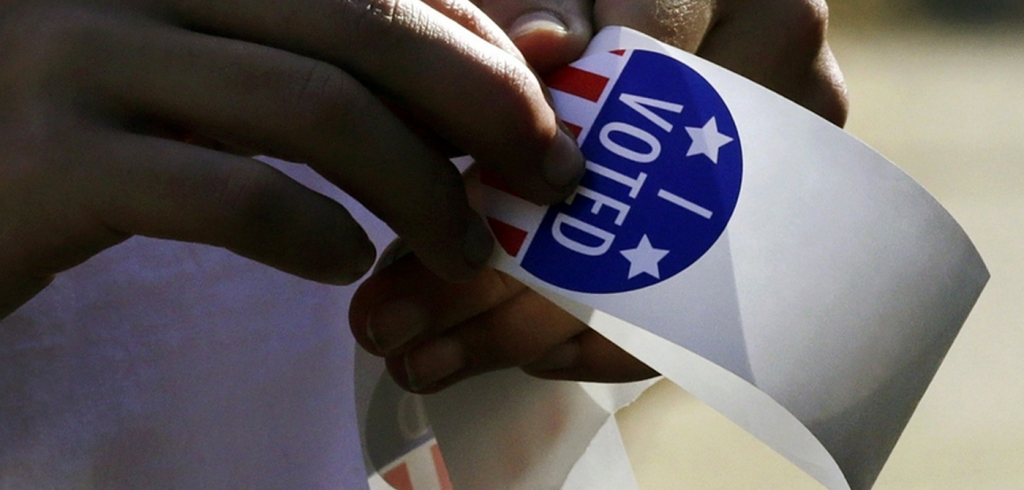
Did you experience any issues at your polling place? Alabama Today is tracking reports of problems or irregularities at polls across the state. The types of issues to report include long wait times, technical problems with machines, potential voter fraud, or requests for information you don’t think you should have to provide. Voters should also report issues to the Secretary of State’s office here. Simply fill out the form below. We will be tracking issues and finding answers when possible. (Click here if the form does not display properly on your device.) Loading… Polls in Alabama will be open statewide from 7 a.m. until 7 p.m.
The Latest: Republicans confident Trump will win Alabama

The Latest on Alabama elections (all times local): 8:25 a.m. Voting is underway in Alabama and Republicans are confident that Donald Trump will win the state. Democrat Hillary Clinton and Trump both visited Alabama during their respective primary battles, but both candidates have concentrated their efforts on battleground states. Secretary of State John Merrill has predicted a record number of voters will cast ballots Tuesday after voter registration hit a record high of 3.3 million. None of Alabama’s four U.S. House races or the lone Senate race on the ballot are expected to be very close given the name recognition and vast amounts of campaign money available to the Republican incumbents. Alabama voters also face 14 amendments that will affect everything from state parks to the age of public officeholders to beer. The polls will remain open until 7 p.m. 2:58 a.m. Donald Trump is expected to win Alabama, which has gone Republican in every presidential election since voting for Jimmy Carter in 1976. Republicans are confident in the deeply red state as polls open Tuesday. Democrat Hillary Clinton and Trump both visited Alabama during their respective primary battles, but both candidates have concentrated their efforts on battleground states since securing their respective party nominations. Following in their paths, volunteers from both parties have been dispatched to campaign in neighboring Florida where the race is considerably tighter. Secretary of State John Merrill has predicted a record number of voters will cast ballots Tuesday after voter registration hit a record high of 3.3 million. Polls are open Tuesday from 7 a.m. until 7 p.m. Republished with permission of the Associated Press.
Lines at voting precincts as polls open in Alabama

Lines stretched across fields and parking lots as polls opened in Alabama on Election Day. Officials are expecting big crowds after a rough-and-tumble presidential race, and those early predictions looked accurate. Rain won’t be a deterrent to potential voters, as forecasters predicted another dry day Tuesday amid a drought that has parched the state. Republican Donald Trump is a heavy favorite to carry the state over Democrat Hillary Clinton in the race for the White House, but other races and issues also will be decided. The ballot includes four U.S. House seats plus a U.S. Senate race, and voters will decide 14 statewide amendments. Here is a glance at some of the issues and questions on Election Day 2016 in Alabama: — HISTORY ON TRUMP’S SIDE Trump will carry Alabama over Clinton without a struggle if history and past voting patterns are an indication. Georgia peanut farmer-turned governor Jimmy Carter was the last Democrat to carry Alabama in a presidential election, and that happened in 1976. No Democrat has come very close since then to winning the state’s nine electoral votes, and the trend is getting worse for the party. Democratic presidential candidates have been stuck below 40 percent of the total vote in Alabama since 2000, when Tennessean Al Gore took nearly 42 percent of the vote compared to Republican George W. Bush. It will be interesting to see how Clinton fares compared to Democratic President Barack Obama, who carried 38 percent of the vote and lost Alabama by 22 percentage points to Republican Mitt Romney in 2012. — WHERE DO I VOTE? State election officials are predicting a possible record turnout by Alabama’s 3.3 million registered voters, but what if people are unsure where to vote? A phone call or a few mouse clicks can clear up that confusion. Voters who aren’t sure where to go on Election Day can call their county registrar’s office — the numbers are in the phone book, and most if not all are available online for Alabama’s 67 counties. For people with internet access, the website alabamavotes.gov may be a better solution. The site is operated by the secretary of state’s office. Residents can verify their registration to vote with a simple search at alabamavotes.gov, and another search pulls up information about voting precincts including addresses and polling times. At the same site, search panes also are available to view sample ballots for each county and to check the status of provisional and absentee ballots. — EYE ON VOTER INTIMIDATION Alabama’s top election agency said it won’t tolerate any attempts to intimidate voters on Election Day. A statement from the secretary of state’s office says anyone caught trying to dissuade others from voting on Tuesday will be prosecuted. Both Republican and Democratic campaigns often have volunteers serving as poll watchers. The statement from the secretary of state says poll watchers can’t disturb voters, try to influence them, campaign, or display any campaign material inside the polling place. Polls were open statewide from 7 a.m. until 7 p.m. — PHOTO ID REQUIRED This year marks the first time Alabama’s Republican-backed law requiring photo identification at the polls comes into play during a presidential election. Alabama requires voters to show photo ID such as a driver’s license, a passport, an Alabama non-driver ID, a university student ID or identification issued by the federal government. Voters without ID can still vote by regular ballot if they are positively identified by at least two election workers as being eligible to vote in a precinct. And voters who don’t have a valid ID will still be able to cast a provisional ballot. — CONSTITUTIONAL AMENDMENTS There’s a lot of fine print on Alabama ballots, and most of it spells out 14 statewide proposals to amend the state’s 1901 Constitution. The outcome will affect everything from state parks to the age of public officeholders to beer. Four of the amendments apply only to single counties. Here is a look at some of the other measures that have gotten the most attention: Amendment 2 aims to protect money for state parks and open the door to private companies getting more involved in park operations. The proposal specifies that park money can’t be diverted to other government functions unless revenues exceed $50 million. It would also allow private entities to run facilities at state parks. Amendment 8 guarantees that everyone has a right to work in the state regardless of whether they’re in a labor union. It mimics a state law already on the books. Amendment 13 would eliminate maximum-age limits for elected or appointed office with the exception of judicial offices. Trustees at public universities would be most likely to be affected. Amendment 14 would prevent hundreds of local laws — from sales taxes to draft beer rules — from being tossed out because of a dispute over legislative procedures in Montgomery. — CONGRESSIONAL RACES None of Alabama’s four U.S. House races nor the lone Senate race on the ballot is expected to be very close given the name recognition and vast amounts of campaign money available to the Republican incumbents, but there could be an exception. In the 2nd District of southeast Alabama, Rep. Martha Roby has faced a backlash by Trump supporters since publicly stating she wouldn’t support the GOP nominee because of his recorded comments about grabbing women. Democrat Nathan Mathis is hoping to capitalize on that dynamic, and Tea Party organizer Becky Gerritson is being promoted as a write-in candidate. On the Senate side, Republican incumbent Richard Shelby isn’t likely to have much problem against Democratic challenger Ron Crumpton, who is best known as an advocate for legalizing medicinal marijuana in the conservative state. Republished with permission of the Associated Press.

